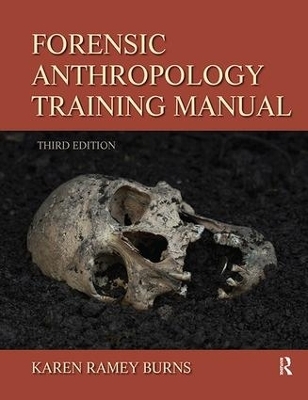
Forensic Anthropology Training Manual
Routledge (Verlag)
978-1-138-40384-0 (ISBN)
Forensic Anthropology Training Manual serves as a practical reference tool and a framework for training in forensic anthropology.
The first chapter informs judges, attorneys, law enforcement personnel, and international workers of the information and services available from a professional forensic anthropologist. The first section (Chapters 2-11) is a training guide to assist in the study of human skeletal anatomy. The second section (Chapters 12-17) focuses on the specific work of the forensic anthropologist, beginning with an introduction to the forensic sciences.
Learning Goals
Upon completing this book readers will be able to:
Have a strong foundation in human skeletal anatomy
Explain how this knowledge contributes to the physical description and personal identification of human remains
Understand the basics of excavating a grave, preparing a forensic report, and presenting expert witness
testimony in a court of law
Define forensic anthropology within the broader context of the forensic sciences
Describe the work of today‘s forensic anthropologists
Karen Ramey Burns is a practicing forensic anthropologist, teacher, writer, and human rights worker. She received her graduate education in forensic anthropology under the direction of the late Dr. William R. Maples at the University of Florida and developed experience in major crime laboratory procedures while working for the Georgia Bureau of Investigation, Division of Forensic Sciences. She continues to serve the state of Georgia as a consultant in forensic anthropology and as an appointed member of the Georgia Council on American Indian Concerns. She has testified as an expert witness in local, state, and international cases. Dr. Burns has devoted much of her professional career to international work, providing educational and technical assistance in the excavation and identification of human remains in Latin America, Haiti, the Middle East, and Africa. She documented war crimes in Iraq after the Gulf War (1991) and provided testimony in the Raboteau Trial in Gonaïve, Haiti (2000). She is the author of the “Protocol for Disinterment and Analysis of Skeletal Remains,” in the Manual for the Effective Prevention and Investigation of Extra-Legal, Arbitrary, and Summary Executions (1991), a United Nations publication. In times of national emergency, she works for the National Disaster Medical System, part of the U.S. Department of Homeland Security. She was deployed for the Katrina/Rita Hurricanes disaster in 2005, Tri-State Crematory incident in 2002, the World Trade Center terrorist attack in 2001, the Tarboro, North Carolina, flood in 1999, and the Flint River flood of 1994. Dr. Burns has contributed to several historic research projects, including a study of the Phoenician genocide in North Africa (Carthage), the identification of the revolutionary war hero Casimir Pulaski, and the search for Amelia Earhart. Dr. Burns is a coauthor of the award-winning book Amelia Earhart’s Shoes, Is the Mystery Solved? (2001), a discourse on the archaeological investigation. Her research interests include microstructure of mineralized tissues, effects of burning and cremation, and decomposition. She teaches human osteology, forensic anthropology, and human origins at the University of Georgia, as well as forensic anthropology and expert witness testimony for the U.S. Department of Justice’s International Criminal Investigative Training Assistance Program (ICITAP). Dr. Burns is presently the Director of Field Investigations for EQUITAS,the Colombian Interdisciplinary Team for Forensic Work and Psychosocial Assistance, Bogotá, Colombia.
Chapter 1. Introduction to Forensic Anthropology
Chapter 2. The Biology of Bone and Joints
Chapter 3. The Skull and Hyoid
Chapter 4. The Shoulder Girdle and Thorax: Clavicle, Scapula, Ribs, and Sternum
Chapter 5. The Vertebral Column
Chapter 6. The Arm: Humerus, Radius, and Ulna
Chapter 7. The Hand: Carpals, Metacarpals, and Phalanges
Chapter 8. The Pelvic Girdle: Illium, Ishium, and Pubis
Chapter 9. The Leg: Femur, Tibia, Fibula, and Patella
Chapter 10. The Foot: Tarsals, Metatarsals, and Phalanges
Chapter 11. Odontology (Teeth)
Chapter 12. Introduction to the Forensic Sciences
Chapter 13. Laboratory Analysis
Chapter 14. Race and Cranial Measurements
Chapter 15. Field Methods
Chapter 16. Professional Results
Chapter 17. Large-Scale Applications
| Erscheinungsdatum | 07.08.2017 |
|---|---|
| Verlagsort | London |
| Sprache | englisch |
| Maße | 210 x 280 mm |
| Gewicht | 1111 g |
| Themenwelt | Sozialwissenschaften ► Ethnologie |
| Sozialwissenschaften ► Soziologie | |
| ISBN-10 | 1-138-40384-9 / 1138403849 |
| ISBN-13 | 978-1-138-40384-0 / 9781138403840 |
| Zustand | Neuware |
| Haben Sie eine Frage zum Produkt? |
aus dem Bereich


